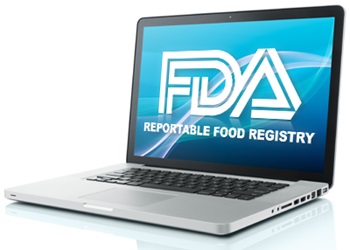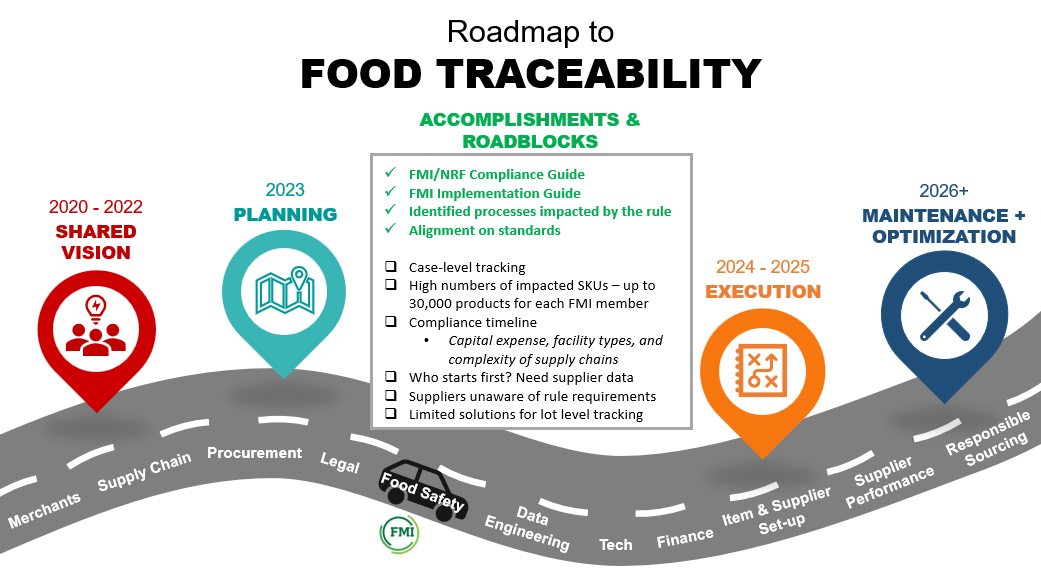By: Hilary Thesmar, PhD, RD, FMI Vice President, Food Safety Programs, Food Marketing Institute

FDA recently released the 5th Annual Report for the Reportable Food Registry (RFR) which includes the reporting period of September 8, 2013-September 7, 2014. In this report, FDA recognizes the work the food industry has done over the past five years to develop resources to address areas that may pose a public health risk.
The Reportable Food Registry was mandated by Congress to help FDA track patterns adulteration and better target inspection resources. Registered food facilities must report to FDA through the electronic portal when they determine an article of food is a reportable food. A reportable food is an “article of food/feed for which there is reasonable probability that the use of, or exposure to, such article of food will cause serious adverse health consequences or death to humans animals.” It is important to note that, although similar, reportable foods are not the same as recalled foods. Reporting is mandatory for all foods regulated by FDA, except infant formula or dietary supplements; moreover, the registry does not capture USDA regulated products. Despite these limitations, data collected through RFR reports are helpful for the retail industry to identify trends and serve as an early warning system for potential public health risks. For example, this year’s report highlights a RFR entry that led to a voluntary recall of ready-to-eat salad products due to potential contamination of Listeria monocytogenes.
Some additional highlights from the latest report are:
- In Year 5, there were 909 total entries; this is a significant decrease in number of entries compared to Year 1 where there were 2,240 total entries.
- Of the total entries for Year 5, industry submitted a total of 201 primary entries.
- Undeclared allergens accounted for 47.3 percent of primary RFR entries with the majority associated with bakery products.
- The pathogens responsible for the most RFR entries were Salmonella (24.9 percent of primary entries) followed by Listeria monocytogenes (18.9 percent of primary entries).
- Salmonella, Listeria monocytogenes, and undeclared allergens accounted for 91 percent of primary entries in Year 5. These three hazards have been the leading reason for RFR entries, accounting for 88 percent of RFR entries for all five years.
Food safety is the utmost priority for the retail food industry and is reflected in the fact that consumers have confidence in the safety of the food they purchase at the grocery store. FMI works closely with FDA to identify trending food safety challenges in order to develop resources to enhance retail food safety programs. FMI has developed the following resources that address problems identified in the recently published RFR data.
Retail Allergen Resource Guide - Undeclared food allergens are food safety risks that impact everyone in the food industry. FMI developed the Retail Allergen Resource Guide to assist the retail food industry in gaining a better understanding of food allergen risks and good retail practices (GRPs) to be able to effectively communicate these risks with employees and customers.
Listeria Action Plan for Retailers - Listeria control at retail is an ongoing challenge. FMI and our members are committed to finding ways to control the growth and if possible, eliminate the presence of Listeria at retail to reduce the risk in the retail environment. The Listeria Action Plan for Retailers was developed by retail food safety experts to provide a simple and usable resource so that store managers can take steps to reduce the risk of Listeria contamination in supermarket delis, and other departments with fresh and prepared foods.
Food Safety Hazard Analysis and Preventive Controls Plan - The purpose of this template food safety plan is to assist FMI members with compliance in warehouses and distribution centers with the FSMA Hazard Analysis and Risk-Based Preventive Control for Human Food rules.
Want more food safety resources? Visit FMI’s Center for Food Retail and Defense.
Photo Credit: FDA


 Industry Topics address your specific area of expertise with resources, reports, events and more.
Industry Topics address your specific area of expertise with resources, reports, events and more.
 Our Research covers consumer behavior and retail operation benchmarks so you can make informed business decisions.
Our Research covers consumer behavior and retail operation benchmarks so you can make informed business decisions.
 Events and Education including online and in-person help you advance your food retail career.
Events and Education including online and in-person help you advance your food retail career.
 Food Safety training, resources and guidance that help you create a company food safety culture.
Food Safety training, resources and guidance that help you create a company food safety culture.
 Government Affairs work — federal and state — on the latest food industry policy, regulatory and legislative issues.
Government Affairs work — federal and state — on the latest food industry policy, regulatory and legislative issues.
 Get Involved. From industry awards to newsletters and committees, these resources help you take advantage of your membership.
Get Involved. From industry awards to newsletters and committees, these resources help you take advantage of your membership.
 Best practices, guidance documents, infographics, signage and more for the food industry on the COVID-19 pandemic.
Best practices, guidance documents, infographics, signage and more for the food industry on the COVID-19 pandemic.
